A potential alternative source of dietary protein can be found in insects. With feed conversion rates close to 2.0 (van Huis, 2013), the efficiency of insect production is higher than that of traditional domestic animal species.
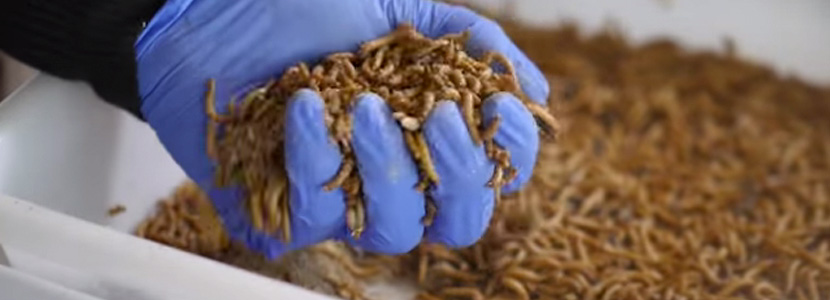 18 Feb 2022
18 Feb 2022
Insect inclusion in production animal diets is slowly but surely becoming a potential alternative. Global demand for protein is growing as the human population increases and food consumption patterns change in response to economic growth. A key example is the increased purchasing power of the emerging Asian middle class that consumes more premium imported products, such as meat.
The availability of soybean meal for animal feed may be limited.
While other protein sources, such as meat meal and tallow, are balanced sources of amino acids (AA) and are an efficient use of waste products from animal production industries, they require suitable processing and transportation in order to be used in monogastric animal diets.
A potential alternative source of dietary protein can be found in insects. With feed conversion rates close to 2.0 (van Huis, 2013), the efficiency of insect production is higher than that of traditional domestic animal species.
Insects are fast-growing, rich in protein and lipids, require minimal space and contribute to the natural diet of many species.
![]()
In addition to this, waste produced in insect production is a valuable source of organic fertilizer which can be used in crop production. Therefore creating a closed circular economy. [register]
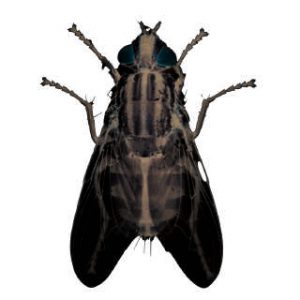
Insects commonly examined for commercial breeding include:
Black soldier flies (BSF; Hermetia illucens)
Common houseflies (Musca domestica)
Yellow mealworms (Tenebrio molitor)
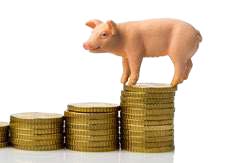 It is widely accepted that feed costs associated with animal production systems represent 60% to 70% of the total enterprise cost. High feed costs have specially high impacts on pig production systems.
It is widely accepted that feed costs associated with animal production systems represent 60% to 70% of the total enterprise cost. High feed costs have specially high impacts on pig production systems.
Chemical composition of insects
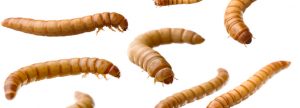
Chemical composition and size of insects are determined by: insect species and the food consumed during the breeding process.
BSF flies do not consume food when they are adults and therefore accumulate protein and fat stores as growing larvae.
| Therefore, the composition of the feed provided to the growing larvae will determine the final fat and protein content. |
This is promising, as it allows the handling of final products to meet the specific needs of different production systems and types of animals within a production system (e.g. weaned pigs versus finishing pigs).
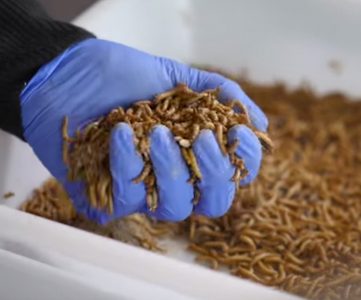
Insects commonly researched as animal food sources range from 40% to 60% raw protein to 10% to 20% fat, and posess high mineral content such as calcium (about 10% ash).
Table 1 presents the AA composition of BSF larvae compared to common pig protein feed sources. Which demosntrates a favorable composition for its inclusion in pig diets.
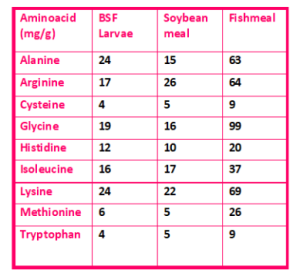
Drying and processing of larvae will affect the resulting nutrient content and availability due to changes in the chemical and physical properties of proteins and lipids.
For example:

The quality of insect protein is also influenced by the age and production stage of insects. This is mainly due to the presence of chitin, an indigestible polysaccharide in the cuticle of insects. Found in higher concentrations in adult crickets compared to those found in larvae (Poelaert et al. , 2016).
Chitin has properties that can be beneficial outside of animal feed production, as a plant fertilizer, in food processing, or as an immunomodulator.
Antimicrobial properties

Antimicrobial management is a key focus of agricultural production systems, including pig production systems. Antimicrobial peptides (MPAs) are small and are constitutively expressed and induced in response to an infection or fungal challenge in insects (larvae). These could be administered to production animals as an alternative to antibiotics (Li et al., 2012).
Insects have been used as treatment for diseases in traditional medicine throughout history. More recently, insects have been shown to possess more than 150 MPAs that do not lead to the development of microbial resistance. In addition to presenting activity against bacteria, fungi, parasites, and viruses, and being safe for supplementation in animal diets (Jozefiak and Engberg, 2017)
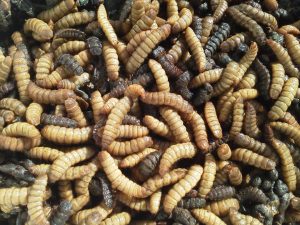
Hipersensitivity
Ingestion of insects can also trigger allergic responses that may not be prevented by subjecting them to treatments, such as heat treatment. However, research on these topics is still very scarce in humans and production animals. Chitin particle size has been shown to affect the allergic response, with medium sized particles that can initiate allergic inflammation and smaller particles that can reduce inflammatory responses (van der Fels-Klerx et al., 2018a).
Insect flour in pig diets
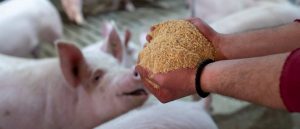
Neumann et al. (2018) compared the complete substitution of soybean meal in feed for piglets and fattening pigs with BSF larvae (partially defatted) or algae meal (Spirulina platensis). They found no differences in production parameters. In addition, an apparent higher digestibility of N was recorded in the BSF diet.
Replacing the soybean meal content of growing/finishing pig diets with 50, 75 and 100% BSF flour (partially defatted; 61% CP and 14% lipids) had no negative impact on the quality of the resulting pork (Altmann et al., 2019).
Pigs fed diets supplemented with BSF larvae produced dorsal fat with a higher content of polyunsaturated fatty acids (Altmann et al., 2019).
Although larger-scale experiments are required to confirm palatability, level of inclusion, growth response, and meat quality of commercially raised insect-fed pigs, the initial overall results are positive.
Insect protein safety

A key consideration of any new food product is the safety and acceptability of the product. It must be free of contaminants such as pathogens, bacteria, chemicals, toxins, and heavy metals.
Unlike other species, BSFs are not disease vectors, as they do not lay their eggs in decaying organic materials and adults do not eat decaying materials (van Huis et al., 2013).
In a review of the risks of chemical contaminants when feeding several species of fly larvae, Charlton et al. (2015) showed that heavy metals presented the highest risk of accumulation in the resulting insects.
Both mealworms and BSF larvae have demonstrated the ability to consume foods containing mycotoxins and pesticides and remove these toxins, so that the resulting larvae/mealworms do not accumulate the toxins (Cai et al., 2018, Van Der Fels-Klerx et al., 2018b).
Conclusion
Insects represent an opportunity to develop a new sustainable food source for pig producers. The AA and energy content of insects such as BSF are ideal for inclusion in pig diets as a replacement for soybean meal and other food protein sources.
Insects’ potential of producing MPAs provides an excellent opportunity to produce feed for production animals as an alternative to antibiotics.
The insect farming industry is in its early stages, and large-scale research and investment is required to confirm the safety, reliability, sustainability and potential contribution of insects as a food source for animals♦
[/register]
Subscribe now to the technical magazine of animal nutrition
AUTHORS
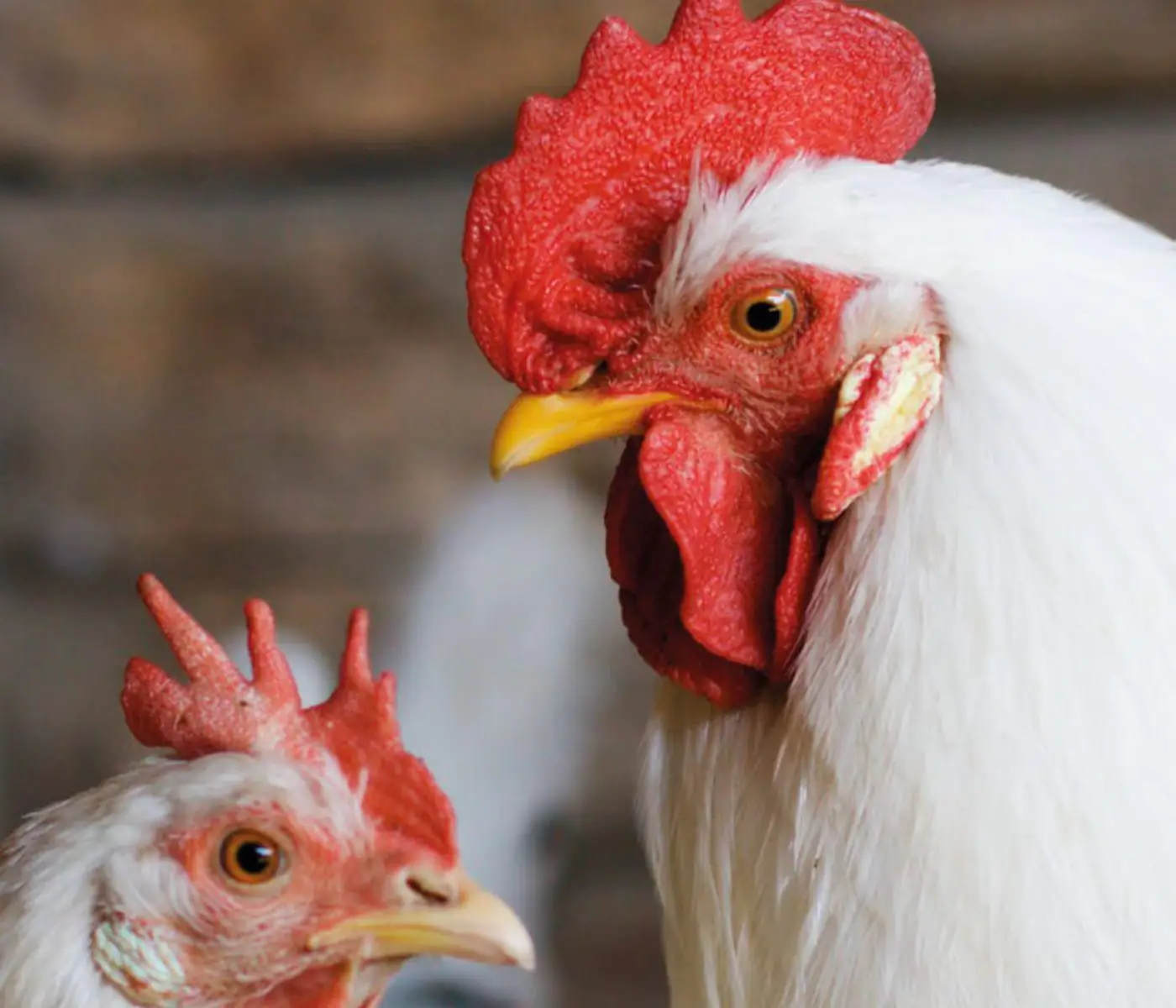
Nutritional Interventions to Improve Fertility in Male Broiler Breeders
Edgar Oviedo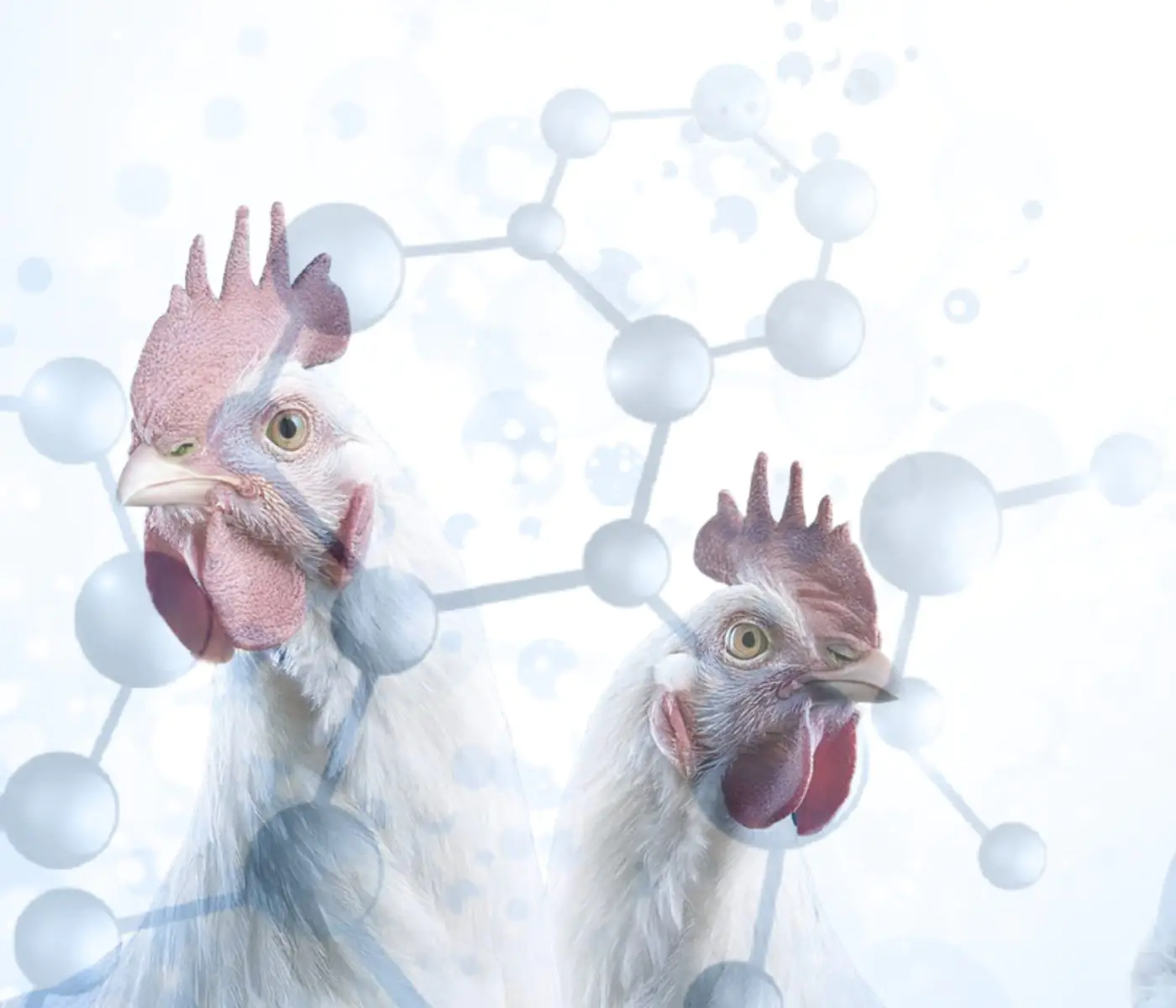
The Use of Organic Acids in Poultry: A Natural Path to Health and Productivity
M. Naeem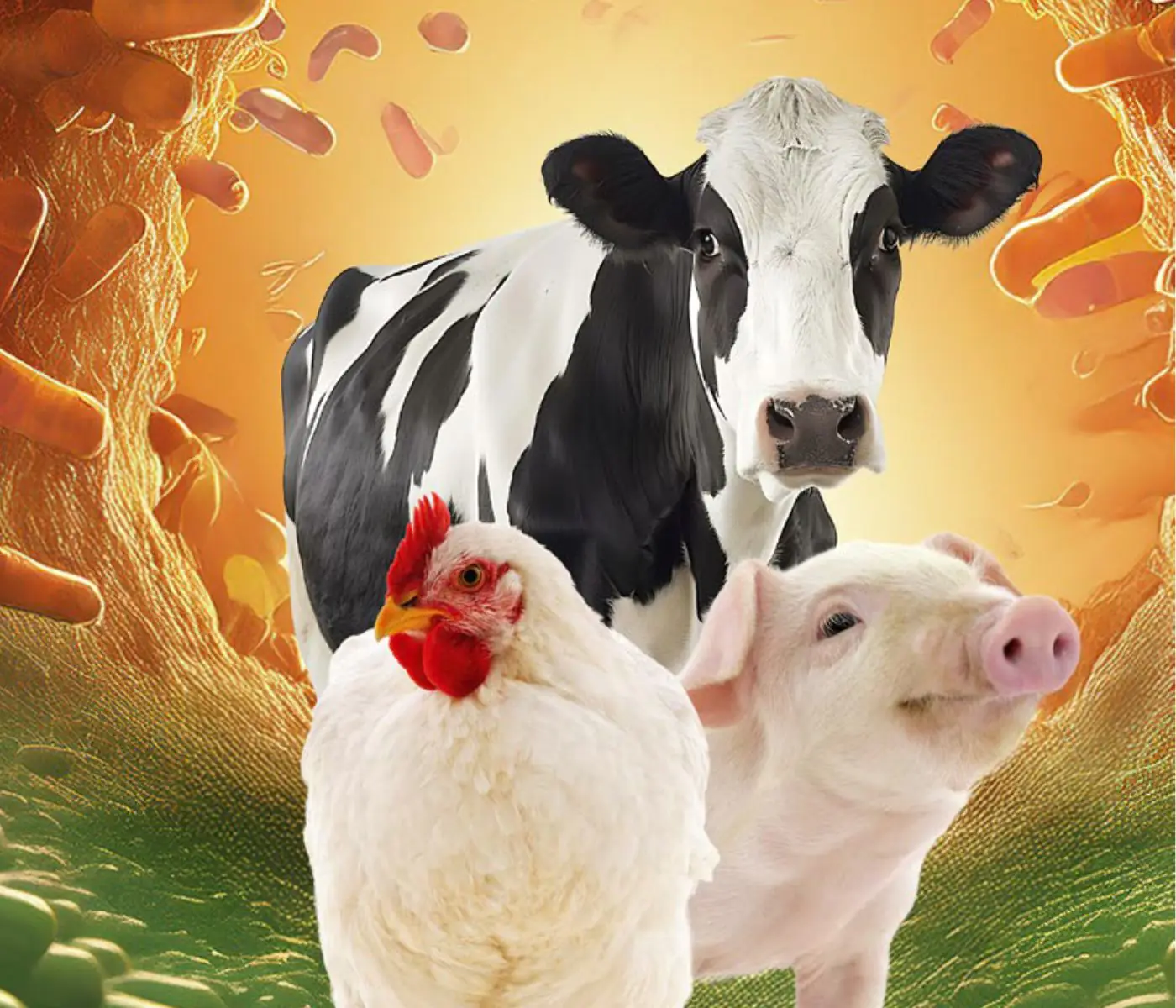
Synergistic Benefits of Prebiotics and Probiotics in Poultry, Swine, and Cattle
Gustavo Adolfo Quintana-Ospina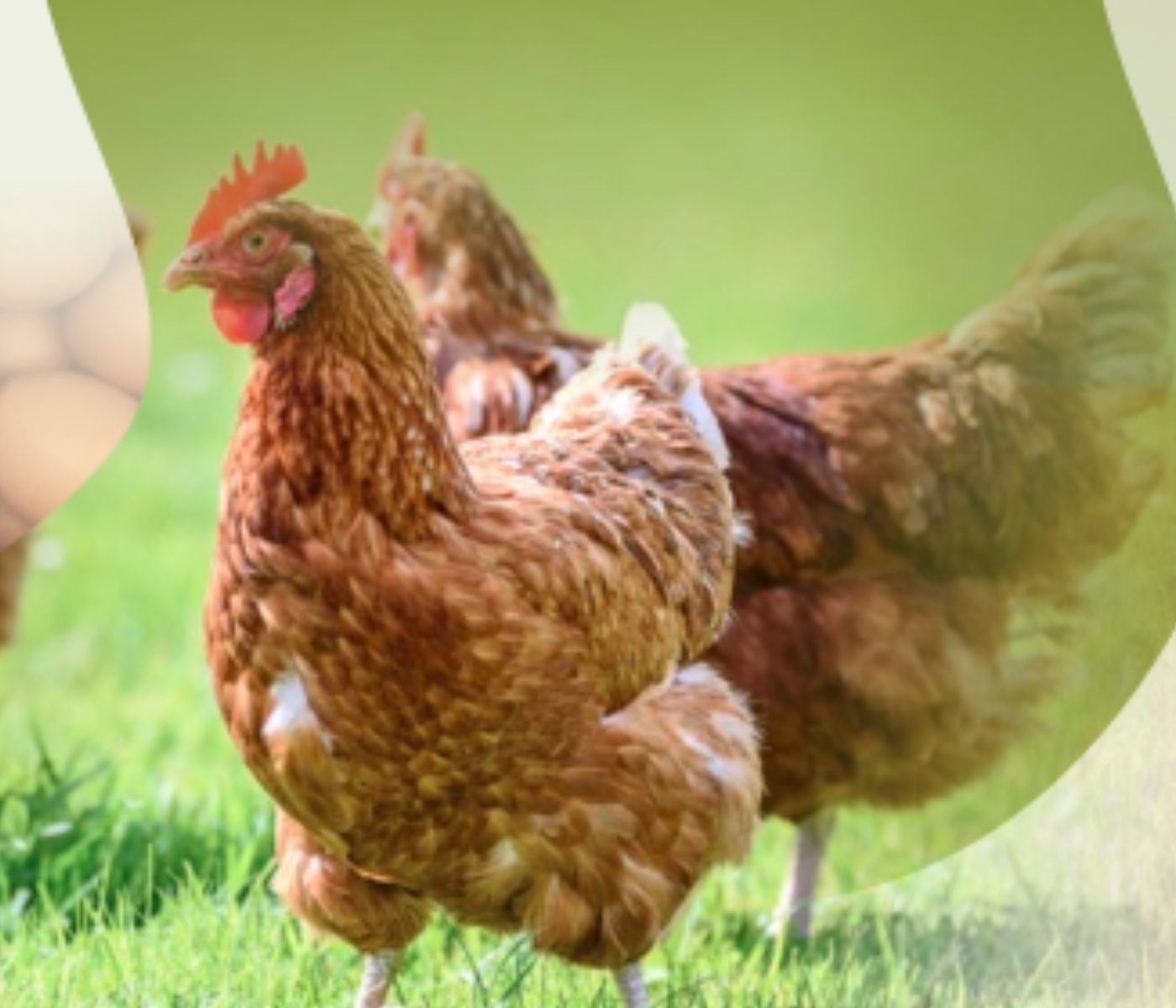
Hybrid Rye Potential in Laying Hen Feed Rations
Gwendolyn Jones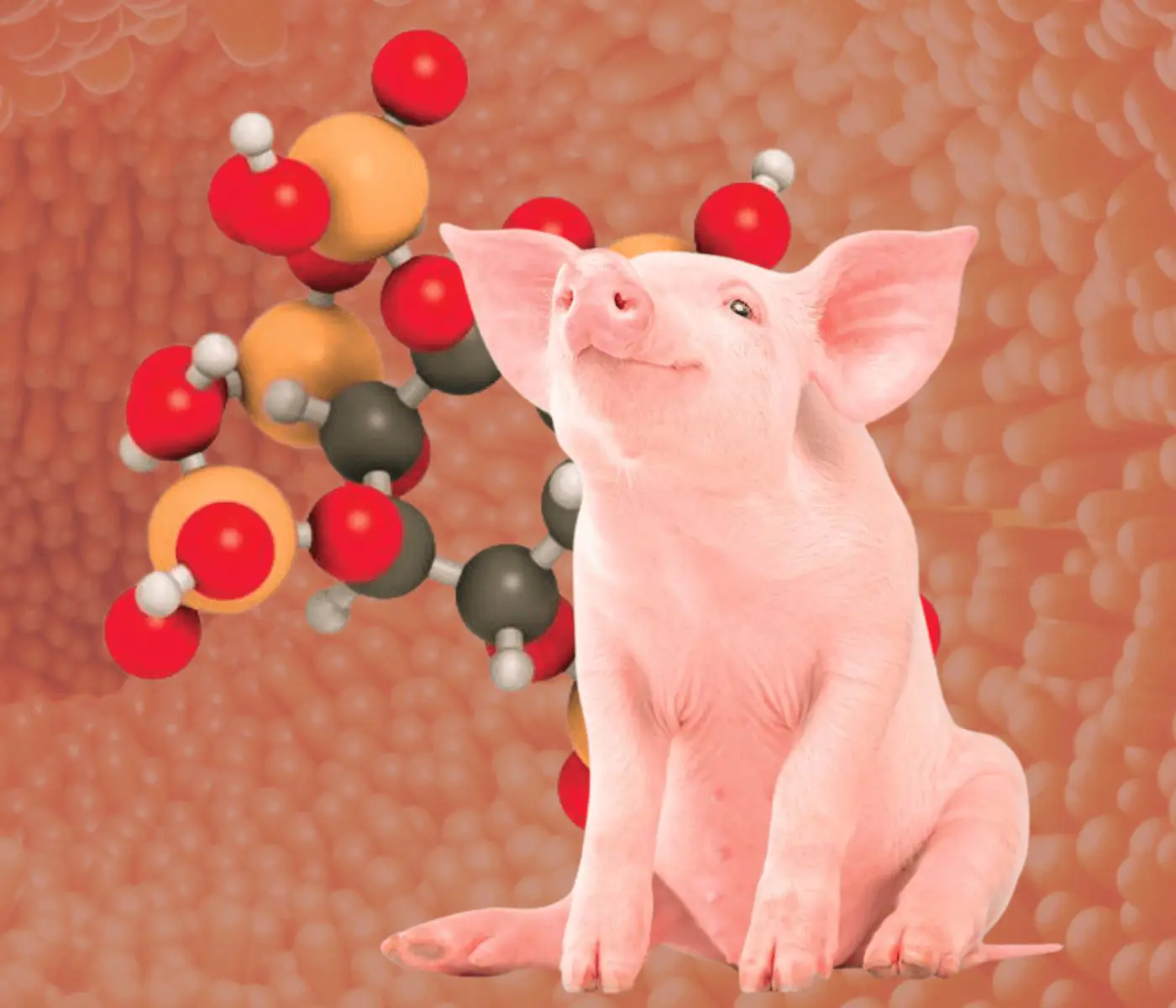
A day in the life of phosphorus in pigs: Part I
Rafael Duran Giménez-Rico
Use of enzymes in diets for ruminants
Braulio de la Calle Campos
Minerals and Hoof Health in the Pregnant Sow
Juan Gabriel Espino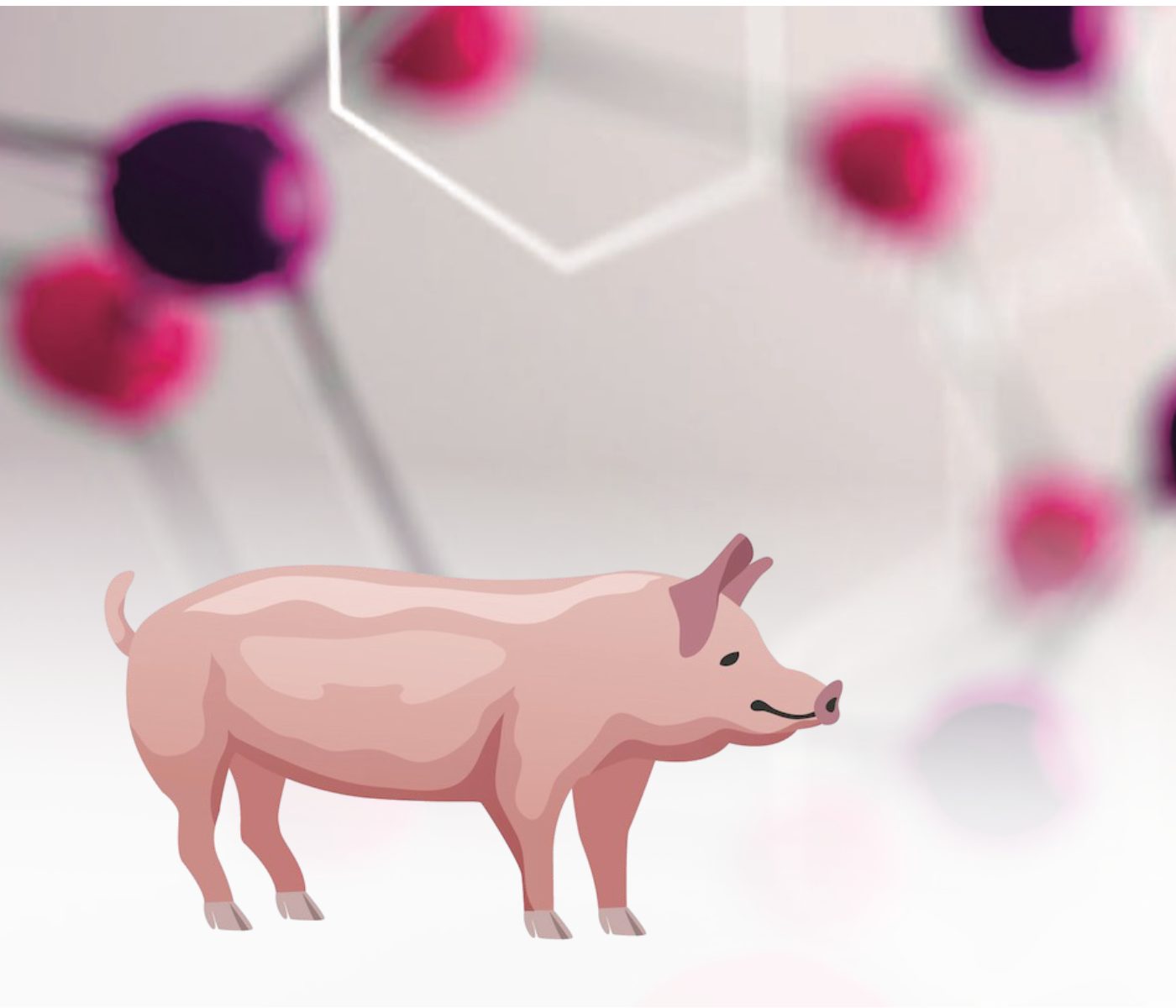
Impact of Oxidized Fats on Swine Reproduction and Offspring
Maria Alejandra Perez Alvarado